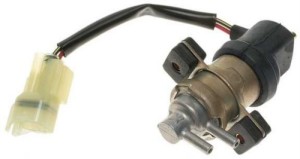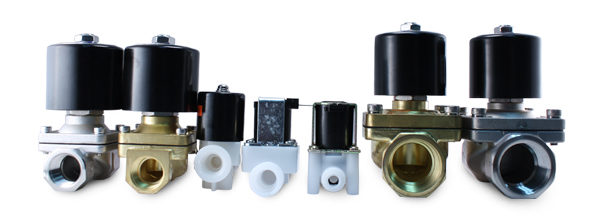Electric vacuum solenoids are an essential component in the majority of internal combustion engines. Furthermore, due to their ‘recycling’ of exhaust fumes, while electric vacuum solenoids hardly bring cars up to ‘green’ standards of environmental friendliness, they do help reduce the quantity of noxious, toxic gases that cars unleash on the atmosphere. Thus, until the political and economic will to drive mass movement to the use of electric cars and engines reaches critical mass, their function remains vital to the fight against global warming.

These electric vacuum solenoids, or ‘switching solenoids’ as they are commonly known, are vital to the process of exhaust gas recirculation, or EGR. Once fuel has passed through an engine, while it’s mostly a combination of relatively harmless nitrogen, water vapor and carbon dioxide, it also contains small quantities of noxious chemicals (the ones you hear so much about in the news) such as carbon monoxide, nitrogen oxide, and hydrocarbons, along with unburned fuel and particulate matter.
By the process of EGR, these gases are returned to the engine for a second round, with two effects. The one is the cooling down of the cylinder by the gas cocktail. The other is the unburned fuel being used on the second round through the engine, which of course means greater fuel efficiency. Many electric vacuum solenoids are activated by an increase in the vacuum produced by a working engine. Thus, when the engine ups its levels of exertion, the vacuum it produces increases, and the EGR valve opens, allowing a fixed quantity of the exhaust fumes in the valve’s proximity to return to the intake manifold (The intake manifold is the pipe that gathers together the air and exhaust fumes into one tube to be piped into the engine).
The switching solenoid is here, as in the case of all solenoid valves, a simple coil of wire that produces an electromagnetic field which, when activated, draws an armature (used as a pin to block the flow of vacuum through the valve) into its coil. These days, the process of an electric vacuum solenoid’s activation is usually governed by the action of an engine computer, rather than the engine vacuum itself. This allows for superior timing in terms of fuel delivery to the cylinders, which, again, means that more fuel can be burnt without any associated risk of igniting the contents of the fuel tank.
It’s not only in the exhaust gas recirculation system that you’ll find solenoids in your automobile. Indeed, the electromechanical valves play an important part in many areas of most cars. Even starting your car requires for you to activate the starter solenoid, a switch which, when it receives current from the ignition, draws two heavy metal contacts together. This opens the engine to the flow of electric current from the car battery, thus bringing the engine to life. If there’s not enough current supplied to the solenoid by the ignition, you’ll usually hear a weak, ‘clacking’ noise as the device repeatedly tries to close the contacts, despite lacking the requisite force to do so.
